Rome regarded their leaders or emperors as their kings and, in some cases, as their god. The act of the emperor was followed and copied by almost all the people.
So, the position this Empire was able to create for itself was all due to the good deeds of the greatest emperors. Emperors like Vespasian, Trajan, Nerva, and Augustus made it possible for the Empire to function smoothly.
Their dedication towards the Empire and its development made it well-known to the world. The top 10 greatest emperors and their greatness is listed here with details.
10. Vespasian
Content
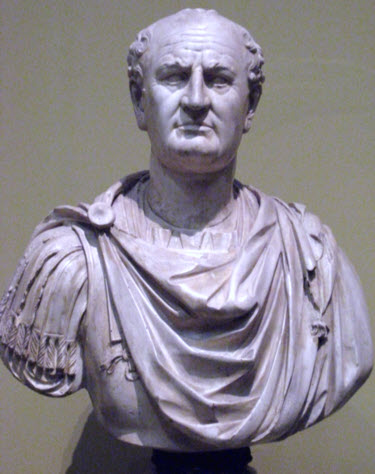
One of the most influential Roman Emperors, Vespasian, was born Titus Flavius Vespasianus on 17th November, 9 AD in Falacrinum, Italy. His full name was Caesar Vespasianus Augustus; however, he was well-known as Vespasian throughout his life and beyond.
He was born to Titus Flavius Sabinus and Vespasia Polla, married to Domitilla – the elder and Caenis. He belonged to the Flavian Dynasty.
Vespasian ruled as an emperor from 69 AD to 79 AD and had an inspirational image throughout. He was also the last Emperor in the Year of the Four Emperors.
Coming to his time of reign, he was known for his witty and amicable manner. He also was a great commander with proper military powers.
Despite his commanding and military personality, he was not too strict, nor was he too liberal. He managed to take a stand wherever and whenever needed and dealt calmly otherwise.
Proving himself as one of the greatest emperors, he involved himself in numerous good deeds, including proper fiscal reforms and consolidation of the Roman Empire. It made his ruling period a stable period in terms of politics and economic areas.
Besides, he was also responsible for major constructional works, including the Colosseum, Temple of peace, and renovation of the capitol. Also, improvised new taxes, which would be in favor of the public.
Overall, the reign of Vespasian brought peace and stability in Rome, and so he was loved and respected by everyone.
However, Vespasian’s reign could not last forever. He died due to diarrhea and became one of the first Roman emperors to die of natural cause rather than murder or suicide.
He died on 23rd June, in 79 AD, and was buried in Rome.
9. Augustus
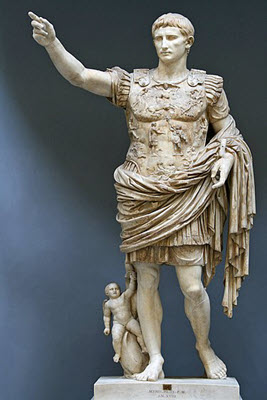
Augustus, the first emperor of Ancient Rome, was born on 23rd September, 63 BC, in Italy. Born as Gaius Octavius to Gaius Octavian and Atia Balba Caesonia, he was later adopted by Julius Caesar.
He belonged to the Julio- Claudian dynasty and was married to Claudia, Scribonia, and Livia. They had a few children, including her child Julia, the Elder, and adopted children Gaius Caesar, Lucius Caesar, Agrippa Postumus, and Tiberius.
Augustus ruled Rome as an emperor from 16th January, 27 BC to 19th August, AD 14. His reign was a success as he was responsible for restoring peace and prosperity in the Roman Empire, which helped change every individual living in Rome.
He had managed to impress Julius Caesar ( his great uncle ) during wars with his loyalty and impressive military skills. So, when Julius Caesar was assassinated, he appointed Augustus as his heir for his wealth and political fortune.
As a responsible emperor, Augustus worked for the stability of marital status in Roman people and the renewal of religious practices. He then renewed tax and did various constructional works, including expanding roads, founding a postal service, establishing a police force, and a fire brigade in Rome.
In addition to this, he annexed Egypt, some areas of Central Europe, a few land portions in the Middle East, and some parts of Spain. It all helped in the extension of trade channels all around.
Seeing all the good deeds of Augustus, the Senatorial General proclaimed him as the Roman God. So, his death on the 19th August, AD 14, brought a massive effect in Rome with the closedown of business and offices with his due respect.
8. Hadrian
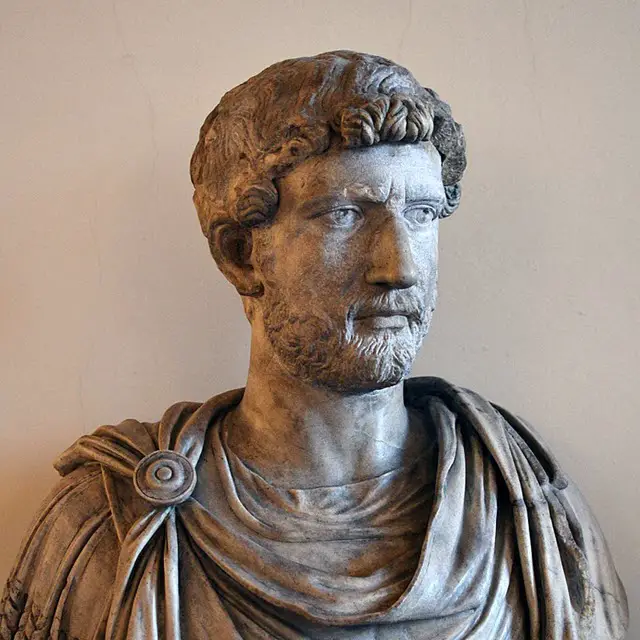
Hadrian, born on the 24th January, 76 AD, was the son of Publius Aelius Hadrianus Afer and Domitia Paulina. He belonged to the Nerva- Antonine dynasty and was married to Vibia Sabina, niece of the Roman Emperor, Trajan.
He ruled as the Roman Emperor for 21 years, from 11th August 117 to 10th July 138. His reign was responsible for strengthening the Empire, which oversaw various constructional works, including the Temple of Venus, Hadrian’s Wall, and the Temple of Roma.
He was well educated and served in military service under Emperor Nerva. So,
his imperial ideas and personal interests helped in enhancing Roman Empire. He visited almost every province of the Roman Empire alongside his administrators and specialists doing various developmental works.
Hadrian was the third emperor of the Five Good Emperors others include Nerva, Trajan, Hadrian, Antoninus Pius, and Marcus Aurelius. His work was appreciated by all the Roman people and was given full respect.
However, some believed that he was responsible for the suicide of his wife as he treated her like a slave. Despite this, people honored him for his good deeds, and his death on 10th July, 138 AD, caused chaos in Roman Empire. Hadrian died of a natural cause, congestive heart failure.
7. Antoninus Pius
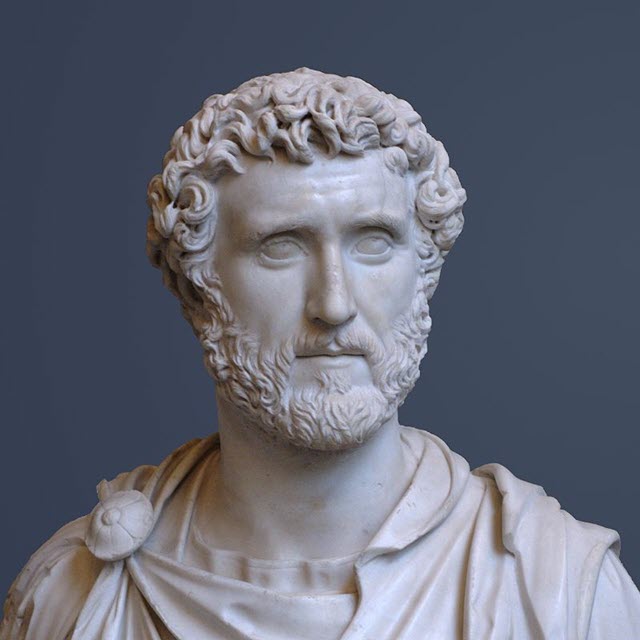
Antoninus Pius, originally named Titus Aurelius Fulvius, was born on 19th September, 86. His full name was Caesar Titus Aelius Hadrianus Antoninus Augustus Pius, but he was well-known as Antoninus Pius.
He was born to Titus Aurelius Fulvus and Arria Fadilla but was later adopted by Hadrian and Vibia Sabina. He was married to Annia Galeria Faustina and was father to Faustina, Marcus Aurelius, and Lucius Verus.
Antoninus reigned as an emperor from 138 to 161. He began working towards honoring his adoptive father, Hadrian, as soon as becoming the Emperor. The Senates were refusing the honor.
Besides, he completed unfinished works of Hadrian, including the Temple of the Deified Hadrian and another temple built in his wife’s memory- The temple of Deified Faustina. He also worked on the repair of the Colosseum.
Unlike many emperors, Antoninus believed in living alone, the Christians, unless they did something wrong. The very belief was passed on by his idol Hadrian.
Apart from this, he was also responsible for the security, peace, up-grading of schools, public buildings, roads, and aqueducts.
Unfortunately, the good deeds could not continue for so long as he died on the 7th March, 161. He had eaten excessive cheese at dinner, which led to food poisoning and died after a few days in Lorium, Etruria.
6. Justinian I
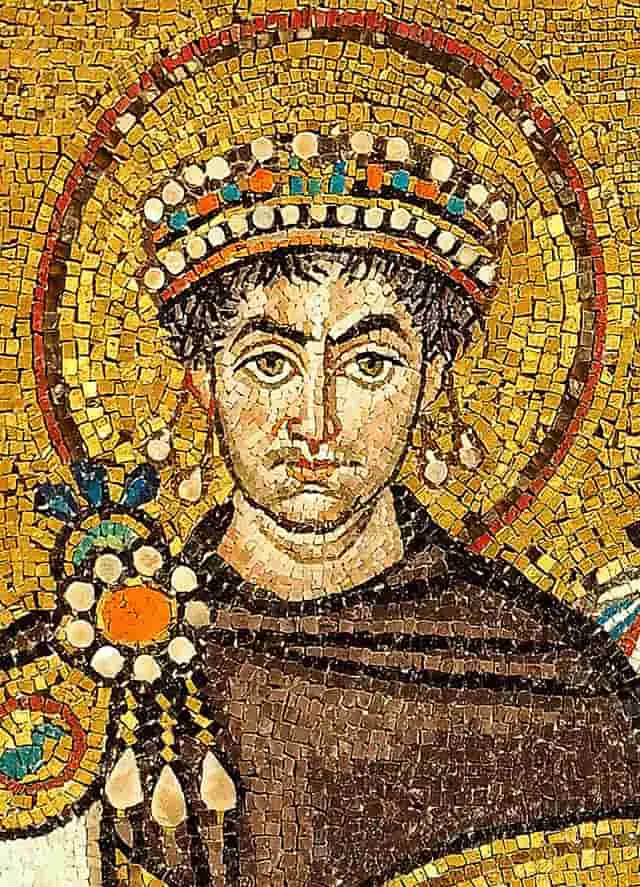
Justinian I was born to Sabbatius and Vigilantia on 11th May, 482 AD. He was later adopted by Justin I, the Emperor of the Byzantine Empire.
He ruled as the Roman emperor from 526 AD to 565 AD, starting from the Byzantine Empire, the eastern part of Rome.
Justinian I was regarded as one of the greatest emperors as he worked towards reconquering the lost western half during his reign. He also created a unified code of law under his name, known as the Justinian code.
Besides, he did work on reconstruction work, including Constantinople, Church of Hagia Sophia. With his influential works and restoration of the Eastern and Western parts, he was known as the last Roman in modern history.
He brought changes in the law, reorganizing the administration of the then imperial government, and outlawed suffrage. So, he was a well-known master legislator.
Similarly, he worked on protecting the laws of Christians and the church as he believed in Christianity. However, he was too attacked by a natural cause like most other Roman Emperors and died on 14th November, 565 AD.
5. Marcus Aurelius
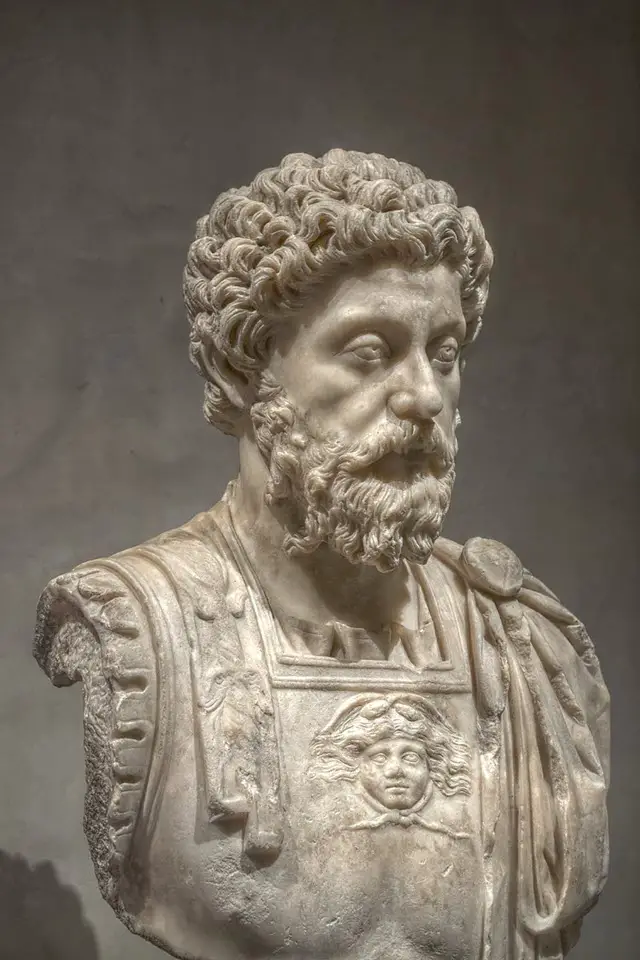
Marcus Aurelius, one of the last of the Five Good Emperors, was born on the 26th April, 121, in Rome – Italy. He was born to Marcus Annius Verus and Domitia Calvillo, later was adopted by Antoninus Pius.
He was married to Faustina the Younger and was father to Annius, Lucilla, Annia Galeria Aurelia Faustina, Fadilla, Annia Cornificia Faustina Minor, and Vibia Aurelia Sabina.
Marcus ruled as the Roman Emperor from 8th March 161 to 17th March 180. His reign was considered to have good governance with numerous developmental and constructional works.
Similarly, he was also responsible for the victory in the war with the Parthians. People honored and respected him for his bravery and his focus on the betterment of the Roman Empire.
However, he could only rule for 19 years as he died on the 17th March, 180 in Sirmium – Pannonia due to a plague. Unfortunately, Rome was led to the Civil War after his death.
4. Claudius
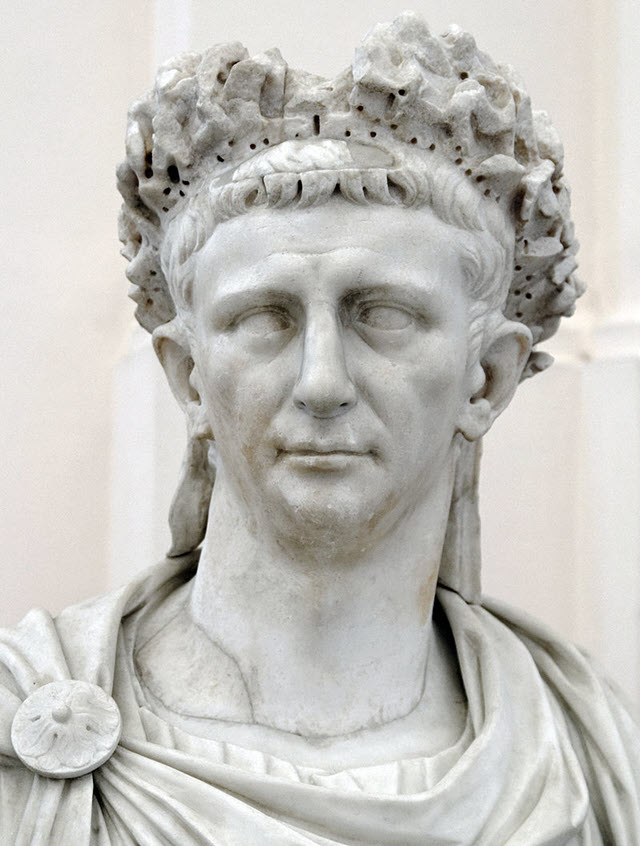
Tiberius Claudius Caesar Augustus Germanicus, famously known as Claudius, was born on the 1st August, 10 BC in Lugdunum, Gaul. He was born to Nero Claudius Drusus and mother Antonia the younger and belonged to the Julio-Claudian dynasty.
He had a very unstable marital status as he was married to many women, including Plautia Urgulanilla, Aelia Paetina, Valeria Messalina, and Julia. They had a few children, including Claudius Drusus, Claudia Antonia, Claudia Octavia, Britannicus, Nero, and Venissa. However, Nero and Venissa were his adopted children.
Claudius reigned as the Roman Emperor from AD 41 to 54 with a very influential reigning period. He is honored to invade Britain in 43 and expand the Empire by annexing Lycia in Asia Minor, Thrace, and Mauretania.
Despite his good deeds, he was not preferred by the Roman Senate, but he acted the other way and proved to be an efficient emperor with numerous influential deeds.
Claudius, unfortunately, was not blessed with perfect physical abilities. He suffered from tremors of hands and heads, a runny nose, foaming at his mouth, and also had limp.
Nevertheless, he did not distract himself with alcohol and any bad deeds, but focused on doing something good and proved to impress everyone and became one of the greatest emperors of the Roman Empire.
Sadly, the greatest Emperor did not rule for long as he died after suffering from a cruel death on the 13th of October, AD 54, in Italy. He was given poisoned mushroom to eat; however, the first attempt did not work, so he was again given the poisoned gruel or an enema.
Claudius was poisoned by Agrippina as she was scared that he would appoint Britannicus as the heir over Nero, her son.
3. Trajan
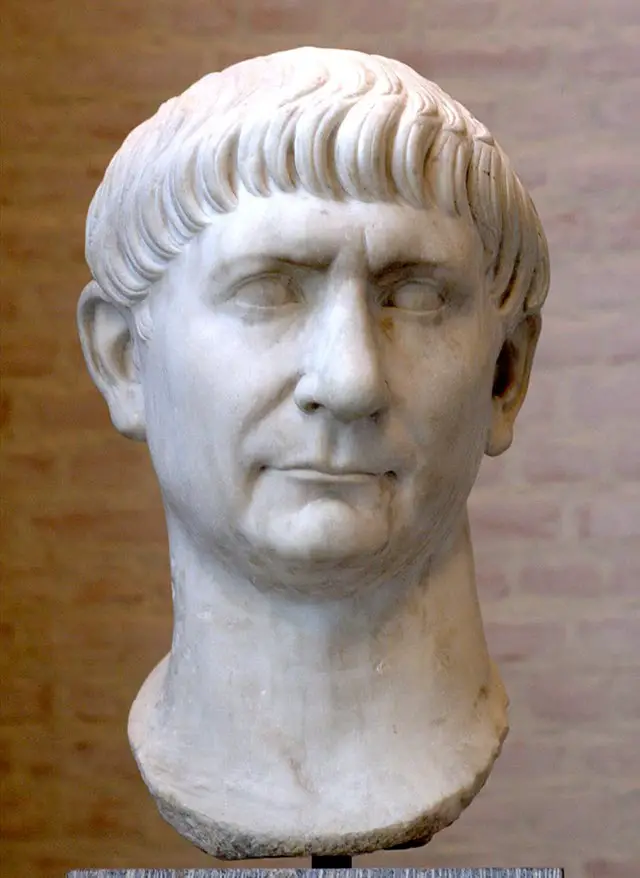
Trajan, son of Marcus Ulpius Trajanus Nerva and Marcia, was born on the 18th September, 53, in Italica. He belonged to the Nerva-Antonine Dynasty.
His predecessor was Nerva, and Hadrian was his successor. He began his reign on the 27th January, 98, and lasted till the 9th August 117.
During 19 years of reign, Trajan managed to bring numerous changes to the Roman Emperor and impress everyone. He had a Spanish origin, so he was the strongest Spanish military person and was the most powerful military commander in Roman history. ,
Like most other great emperors, Trajan also extended the Empire’s boundaries to the east and enlarged social welfare, and mainly undertook a building program.
Similarly focused on Public works, aqueducts, reducing taxes, the welfare of poor children. Rome had its highest expansion during his reign.
The first shopping mall was created during his reign, which was funded by the Dacian wars. He also built Trajan’s bridge and Trajan’s Column, which was about 200 feet tall, and Trajan’s Market and is still available.
He was a great influencer in the style of official art; however, he was imitated by many for being very innocent and plain by his look. Nevertheless, he was the best one amongst the Five Good Emperors.
Unfortunately, the good deeds had to take a halt as Trajan died on 9th August, 117, in Selinus, Cilicia. He died due to a severe stroke.
2. Nerva

Marcus Cocceius Nerva, famously known as Nerva, was born on 8th November, 30, in Narni, Italy. He was born to Marcus Cocceius Nerva and Sergia Plautilla; and belonged to the Nerva- Antonine dynasty.
Marcus was the first of Five Good Emperors and the first to adopt an heir despite not being part of his biological family. He ruled as an Emperor from 96 to 98.
Though he began very late, at the age of 66, he managed to bring massive changes in the history of the Roman Empire. His reign made drastic changes, including stability after the unstable successions of his predecessors.
He also established the foundations for a golden era for Rome and was one of the moderate and wise emperors in Roman History.
Apart from this, Marcus worked on improvising the transport system and built granaries that improved the supply of food for all around Rome. Also, he made sure to enhance a peaceful environment even after his death by appointing Trajan as his new heir.
Unfortunately, Marcus could only do good for a few years as he died on the 28th January, 98, in the Gardens of Sallust, Rome, Italy.
1. Constantine the Great
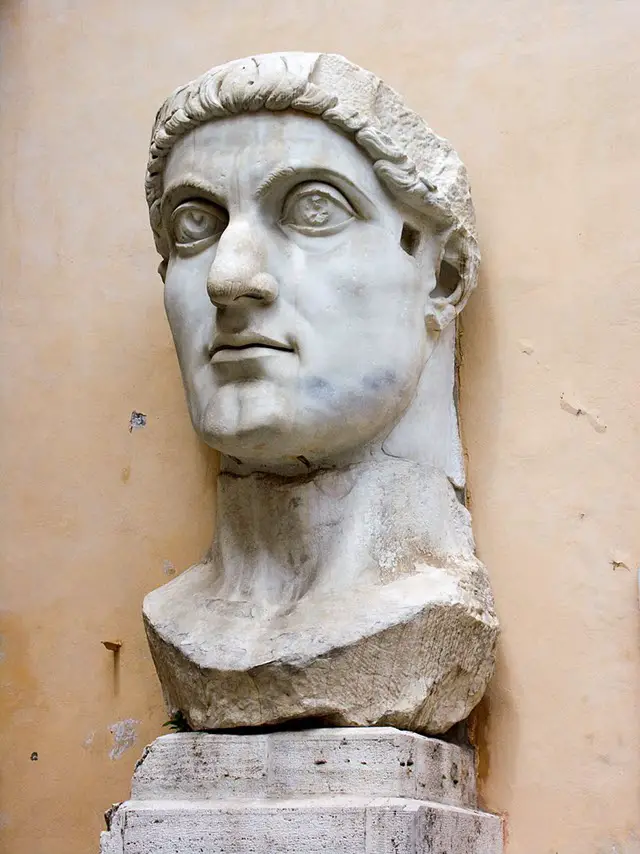
Constantine the Great, son of Constantius Chlorus and Helena, was born on 27th February, c.272 AD in Dardania, Roman Empire in modern Serbia. He was married to Minervina and Fausta and was the father to Crispus, Constantine II, Constantius II, Constantina, Constans, and Helena.
Constantine’s father was the Tetrarchy of Diocletian when he was 21 years old. During that period, his father was asked to divorce Helena and marry Theodora, daughter of Emperor Maximian.
Though he belonged to Roman Polytheism, he changed to Nicene Christianity and became the first Roman Emperor to turn to Christianity.
However, he did great deeds for the Christians and majorly brought tolerance for Christianity in the Roman Empire, and stopped the ritual of persecuting the Christians.
Apart from this, he is well known for extending the portion of The Roman Empire as he worked alongside his large army and proved to be a good leader since then.
Besides, Constantine changed in giving provincial governorships to non-senators and only gave it to the loyal senates. Still, he kept them away from military command as he did not want them to feel too ambitious.
Unfortunately, he died at the age of 65 on 22nd May, 337, due to some unknown illness during the campaign against Persians.
Related:
- Top 10 Worst Roman Emperors
- Top 10 Ancient Roman Games and Recreation
- Top 10 Ancient Roman Weapons
- Top 10 Most Famous Roman Generals
Conclusion:
The whole Roman Empire had various kinds of emperors, from the most moderate to the cruelest ones. The governance also depended on them, so it faced both a peaceful and a weary situation throughout its time.
However, the Emperors mentioned in this article made the Empire and their time or reign fruitful and impactful through their positive deeds and inspired many to come.
This article could only list the top 10 greatest emperors, and some of the other inspirational include Titus, Aulus Vitellius, Galba, and many more.

Augustus should have been first.
1.Augustus
2.Trajan
3.Marcus Aurelias
4.Nerva
5.Hadrian
6.Antonius Pius
7.Justinian
8.Constantine
9.Vespasian
10.Claudius
This isn’t right at all. I know to some degree this is subjective, but this is far from common consensus without sufficient justification. I mean Constantine 1st Augustus 9th????
Constantine THE GREAT and Augustus were unequivocally the Greatest of the Roman dynasty.
if you don’t have anything nice to say don’t say anything at all